A persuasive pre-listing presentation can be a killer part of your marketing arsenal. A great one can help you stand out amongst your competitors and will greatly reduce the time you spend answering questions during your in-person listing presentation. A poor pre-listing presentation, on the other hand, can harm your chances of securing a listing and make the listing appointment more arduous than it needs to be.
If you don’t have a listing presentation, or if you cringe every time you pass it out, this post is for you. We’re going to go deep into what a pre-listing presentation is, what it should look like, and what you should include—with a long list of success tips and examples.
[highlight icon=”fa-cloud-download-alt”]PSST! There’s a FREE download below. Don’t miss it!!![/highlight]
What is a Pre-Listing Presentation?
Pre-Listing Presentation vs Listing Presentation
Many people confuse a pre-listing presentation and an actual listing presentation. So first, let’s separate the two. A pre-listing presentation is something you deliver BEFORE the actual listing appointment. This is not an in-person presentation—your listing presentation is your actual in-face presentation/interview.
The Setup Before the Big Show
A pre-listing presentation is a great way to get a potential client acquainted with you and your team, your marketing, and even your market. You want your face-to-face time to be as effective as possible. The pre-listing presentation helps reduce a lot of the explanation time and leaves more time open for questions, interview time, and the house tour.
Does Not Replace You or Your Listing Presentation
As is often the case, you will be the main reason someone chooses to hire you and your team. The pre-listing presentation is not meant to replace your sales pitch or your charm (though it can certainly help). You will likely still need to do some in-person selling at your actual listing presentation appointment.
It’s Not About You
The biggest problem we see with many pre-listing presentations is how self-absorbed they are. The typical pre-listing presentation is all about the agent—the awards they’ve won, the houses they’ve sold, etc.
Remember, the client only cares about themselves. They want to know what you can do for them. So, while you should absolutely build your credibility with your stats/awards, that should be secondary, or even tertiary, to what you’re going to do to help them get their home sold.
Pre-Listing Presentation Design Rules
Now that we know what a pre-listing presentation is, let’s talk about the general principles for putting one together. Then we’ll get into the meat of a pre-listing presentation’s content.
Rule #1—Keep It Concise!
The best way to bore someone quickly is to drone on and on and on about, well, anything. Keep your copy concise and to the point. Don’t waste the seller’s time.
Rule #2—Break Up Your Content
A wall of text is a surefire way to get your presentation overlooked. In addition to keeping things concise (rule #1), you need to break up your content into easily digestible bites. Use lots of headings, subheadings, bullet and number lists, and assets.
Rule #3—Use Plenty of Assets
Speaking of assets, the adage “a picture is worth a thousand words” is very applicable to a pre-listing presentation. Images help break up content (rule #2) and breathe additional life into your presentation. Even better than images? Illustrations! Illustrate as many points as you can. Illustrations help get important points across and are easier for most people to digest.
Rule #4—Keep It On-Brand and On-Message
Remember, the pre-listing presentation comes BEFORE your actual listing appointment. You want the seller’s impression of you to be an excellent one. Your pre-listing presentation should convey what working with you and your team will be like.
Think about your target audience when you’re putting your presentation together (as you should do with all marketing). If you’re a friendly and fun team, your pre-listing presentation should reflect that in both the copy’s tone and the template’s design.
Rule #5—Less is More
When we were looking through pre-listing presentations in preparation for this article, we all noticed that the presentations we were most drawn to as a team were the ones that took a less-is-more approach. Let your design give the content room to breathe, even if it makes your pre-listing presentation a few pages longer.
What Should Your Pre-Listing Presentation Include?
Brace yourself, Effie—this section is very detailed! We’ve broken up what should be included in your pre-listing presentation into sections, topics, examples, and resources. This will help you arrange your own pre-listing presentation in a way that’s easy for sellers to understand. Ready? Let’s get it!
[callout_box icon=”fa-cloud-download”]
Download our Pre-Listing Presentation Resources
You’ll get all of the ideas below in an easy-to-follow outline as well as a sample of the pre-listing presentation offered in our own product, Sidekick.
[popup_button trigger=”pre-listing-popup”]DOWNLOAD NOW![/popup_button]
[/callout_box]
Section #1—Introduction
Your introduction should be a brief hello from you and your team. Don’t go deep here. Save that for later. For now, you’re just welcoming the seller and thanking them for reading through your pre-listing presentation and potentially choosing your team to list their home.
Idea—Welcome Letter
Tips for Success
- Include your photo
- Include your signature
- Make it heartfelt and warm
- Include your “big why”—why are you in real estate anyway?
Examples
Special thanks to: Chris Morrison, Henry Billete, and Justin Oberholtzer.
Idea—Table of Contents
Any way that you can help the seller navigate your listing presentation, please do so.
Tips for Success
- Break it up into sections and topics
- Use color-coded sections to further tie sections together
Examples
Special thanks to: Mary Pope-Handy, Ann Kieran, and Houlihan Lawrence.
Idea—Questions to Ask
The seller will obviously have a lot of questions both before and after reading this presentation. Remind them to write them all down and give them space to do so. This will help your listing presentation go smoother.
Tips for Success
- Leave them enough space to write all their questions
- Remind them that the listing presentation is the perfect time to go over these questions
- Give them a few reminders throughout the pre-listing presentation to go back and write down their questions on this page
Examples
Section #2—Understand the Market
Before you talk about pricing and marketing strategies, you should prep the seller by helping them understand the market. Your local market has its own unique intricacies. Remember, real estate is local. This is a good place to show off your local know-how.
Idea—Local Market Statistics
Tips for Success
- Cover the big 3 stats—sales price, inventory, days on market
- Use graphs to show market trends
- Explain the graphs so the seller knows what they’re looking at
- Update these numbers frequently! (at least every quarter)
- Explain a buyers’ vs. a sellers’ market
Examples
Special thanks to: The Hollinger Team.
Idea—Where Buyers Come From
Different markets and even different segments of markets have different ways of attracting buyers. Sign calls may be popular in your area, while Craigslist may not be. Or vice versa. Having this conversation now will help prep the seller for your marketing strategies laid out later in your pre-listing presentation.
Tips for Success
- Use a graph to teach and explain
- Show differences in national vs. local numbers
- Give them stats showing where your last 20 buyers came from
Examples
Special thanks to: Kentwood Real Estate, Realty Partners, Robin Fink, Ranch & Recreational Group, Farrell Realty.
Section #3—Hire a Professional
There are many ways to sell a house. New startups crop up every day with a new way to sell your home without the use of a Realtor®. While that may work for some, the majority of homeowners need your expertise.
Idea—Why Use a Realtor®
It’s important to not only point out why using an agent is important, you’ll also want to emphasize why using a Realtor® is better than a regular agent.
Tips for Success
- Talk about the Realtor® Code of Ethics, and even link to it in this presentation
- Show them how you save them time, money, frustration, and anger
- Remember, you are shielding them against buyers and other agents—that’s valuable!
Idea—Interview Your Realtor®
A seller may not know good questions to ask when she is interviewing Realtors®. This idea gives them a list of hard-hitting questions to ask during the listing presentation with the goal being your answers will be better than your competitors.
Tips for Success
- Put in questions that matter to you and your market
- Be prepared to answer them!
- Touch on this section in your listing presentation and ask what other agents have said
Examples
Special thanks to: The Hollinger Team, Tristan & Associates, Mary Pope-Handy, and Katie DeBill.
Idea—Commission Explained
Oh, commissions. The oft-talked about subject. It’s important to have this conversation in your pre-listing presentation before it comes up in person. It may help remedy any objections once you’re speaking face-to-face. It’s also a good place to educate sellers about where commission goes and explain how you get paid.
Tips for Success
- Be matter-of-fact in your explanations
- Educate the seller on all the things you pay for to market their home
- Emphasize that Realtors® often get their clients more money for their homes
Examples
Special thanks to: Ashley Garner and Ranch & Recreational Group.
Section #4—Price Your Home
Now that we’ve taken the time to explain the local market and we’ve educated the client on why they should hire a professional, it’s time to talk price. Pricing can be seen as very mysterious to many sellers and, with automated tools like Zillow around, it’s important to highlight the correct way to arrive at a proper price and what happens when you don’t.
Idea—How to Find Price
This is a great place to go into some detail about how price is determined. Even a simple example here could help provide much clarity to the seller
Tips for Success
- Talk about how comparable sales are adjusted to arrive at a price
- Provide a side-by-side example of three properties with similar features. If this takes up too much space, link to an example on your website.
- Mention that real examples from their neighborhood will be shown in the in-person listing presentation
Examples
Special thanks to: Ben Beesley, Tom Savage, Daniel Walker, Bunch Real Estate Group, At Properties, and Kentwood Real Estate.
Idea—Pricing Factors/Non-Factors
We recommend being very bold here. Make sure the seller understands what does and does not matter when determining price.
Tips for Success
- Emphasize the market dictates price—you’re just the messenger
- Again, visual elements make a huge difference here
Examples
Special thanks to: Henry Billette, Steve Shalongo, Robin Fink, and Karen Fallon.
Idea—Price/Time Comparison
Make sure the seller understands how time affects price.
Tips for Success
- Remind them that the longer a home is on the market, the less interest there will be and buyers will start to assume something’s wrong with the home
- Include examples of past listings in your local area with price problems (don’t identify them outright)
Examples
Special thanks to: Bunch Real Estate Group, Karen Fallon, and Chris Morrison.
Section #5—Prepare Your Home
It’s a great idea to give sellers some tips to get their home market-ready. This is a great section to highlight how you go above and beyond most Realtors® with your access to home stagers and other contractors who can help prep the home.
While this section isn’t absolutely necessary for a pre-listing presentation—you could just as easily provide it later—it’s common practice to include it here. We will warn you that this should NOT be half of your pre-listing presentation. (Many we previewed were mostly made up of this section.)
Idea—Staging Tips
Tips for Success
- DON’T give a huge list here—provide a concise list of items that can be done
- Mention your access to professional stagers who can help
- Talk about how staging shortens time on market and increases price
- Collaborate with or ask a professional stager for advice on this section
Examples
Special thanks to: Adam Powers, Farrell Realty, and Brandy Underberg.
Idea—Curb Appeal Tips
Tips for Success
- Like the Staging Tips idea above, don’t give a huge list. Keep it concise.
- Provide before/after photos of homes with great curb appeal updates
- Create a Pinterest board with curb appeal ideas and link to it
Examples
Special thanks to: Ann Kieran and Kentwood Real Estate.
Idea—Cleaning List
Tips for Success
- Create a simple checklist of items that are UNCOMMON—things people don’t think about
- Link to a Pinterest board or some videos with cleaning hacks for those harder tasks
- Include a checklist or handout as an appendix to this presentation or as a download on your website for sellers to follow
Idea—Info for Buyers
This is not about seller disclosures but is more about providing that extra information that most buyers will be curious about.
Tips for Success
- Tell sellers not to pack things like appliance manuals
- Create a separate handout to be left at the listing with utility averages, paint colors, appliance warranties, and past contractors who have worked on the home
- Include a checklist or handout as an appendix to this presentation or as a download on your website that sellers can fill out
Section #6—Market Your Home
Up until now, we’ve provided a lot of education but haven’t been too strong on sales. This section is where you get to really show how you market listings. The biggest advice we have for this section is to provide concrete examples. Let’s dive right in.
Idea—Marketing Plan
Add your step-by-step marketing plan to your pre-listing presentation. Make it thorough and provide numerous examples. This pairs well with a marketing timeline (discussed below) so your seller can see when items will be executed.
Tips for Success
- List important steps, not basic steps (think “send postcards to closest 100 homes” not “put keybox on property”)
- Point out the items that are “exclusive” to you and your team
- This is a good place to call out your questions page
Examples
Special thanks to: Ben Beesley, Karen Fallon, Katie DeBill, Novello Group, Robin Fink, and Ann Kieran.
Idea—Marketing Items
Showcase the pieces of marketing you and your team create and use to market a home. This is a great place to showcase the cohesion of your branding and marketing.
Tips for Success
- Provide visual examples of your listing materials
- Include brief descriptions of how the materials will be used
- Customize the preview items for the seller
- Include a link to your website where a seller can go download a sample packet of materials
Examples
Special thanks to: Chris Morrison, Daniel Walker, Greg Barteluk, Hancock Group, Listing Power Tools, Steve Shalongo, Tom Savage, At Properties, and Kentwood Real Estate.
Idea—Marketing Timeline
Sellers want to know when things are going to happen. This timeline will help them understand at what point in the process you’ll be doing these marketing activities.
Tips for Success
- Separate pre-market and on-market activities
- Highlight one-time vs ongoing activities
- Point out items that are “exclusive” to you and your team
Examples
Special thanks to: Ann Kieran.
Idea—Generating Awareness/Interest/Traffic
This idea focuses on the activities you and your team will perform to generate awareness about your new listing.
Tips for Success
- Focus on things not represented in your Marketing Items section above. A good rule of thumb is if you can’t represent it with a photo example, put it here
- Highlight things like calls you make, industry events you attend, relationships you have, etc.
- Tie this in with the “Where Buyers Come From” idea from the “Understand the Market” section
Examples
Special thanks to: Daniel Walker.
Section #7—Timeline to Sell
We’ve previously mentioned that sellers like to know the timeline of selling a home so they know what to expect. Any way that you can give them a complete glimpse of the process is helpful. This section is pretty straightforward so we don’t have individual ideas, but here are some tips for success.
Tips for Success
- Separate pre-market, on-market, and in-contract activities
- Color code these separate activity sections
- Provide a rough time estimate of when each stage happens
- Tie in items from previous sections
Examples
Special thanks to: Ann Kieran.
Section #8—About You/Your Team
After seven sections all about the client, this section CAN and should be all about you and your team. Make this as personal and friendly as possible. Make sure you only choose two or three of the items below.
Idea—Your USP (Unique Selling Proposition)
A USP (unique selling proposition) is that one thing that makes you totally different from the competition. It could be huge thing like “we’ll sell your home in 30 days or less” or something small like “every home gets a 4k video shoot.” Whatever it is (and we wrote a whole blog post about it), it has to be one-of-a-kind to count.
Tips for Success
- Your USP doesn’t have to be mind-blowing, but it should be unique
- Consider branding your USP to help it stand out
- Call out to your USP in the marketing section above
Examples
Special thanks to: Michael Davis.
Idea—Biography
A biography is great for Realtors® who may be new to the business or whose resume is light in features. It’s a great way to talk about your love for real estate or your background in other fields.
Tips for Success
- Add some personal touches to humanize your biography
- Use either a bio or a resume, but shy away from using both
- Include a photo of yourself doing something you love like gardening, skiing, or playing with your dog
Examples
Special thanks to: Ashley Garner.
Idea—Resume
If your professional experience includes lots of honors, awards, or educational history, consider adding your resume to your pre-listing presentation.
Tips for Success
- Break up your resume into sections: Education, Experience, Awards, Personal/Volunteer
- Keep each point brief; don’t drone on in paragraphs
- Keep it to one page or less
- Only include items that are applicable to real estate; truncate any non-related items
Examples
Special thanks to: Hancock Group and Michael Davis.
Idea—Your Team
If you have a team of people helping you, showcase them here. This will show strength in numbers but will also help the seller know who is who.
Tips for Success
- Give a brief explanation of each person’s role
- Include a professional or fun photo of each person—make sure it’s high-quality!
- Consider adding # of years in real estate or similar compelling statistic
- If you have a large team, keep it to staff directly involved in home selling
- Add a link to your website’s team page where people can get a more detailed biography of each person
Examples
Special thanks to: Hancock Group and The Hollinger Team.
Idea—Your Stats
Stats are compelling. If you don’t know your numbers, how can you improve? Include your own statistics to show the seller how you’re better.
Tips for Success
- Include things like how much more you net your sellers than others, how much faster you sell homes than the typical agent in your area, etc.
- Make sure these stats are seller-focused, not you-focused
- Use charts/graphs to show the differences in numbers between you/your team and your market average
- Have a map on your website that shows your entire listing history and link to it here
Examples
Special thanks to: The Baldwin Team, Novello Group, KJK Properties, Karen Fallon, Jim Maloof, GoodLife Team, At Properties, Ewing & Associates, and Kentwood Real Estate.
Idea—Office/Company Info
If you have a large office or work for a franchise with global capabilities, consider adding a section to your pre-listing presentation to showcase this.
Tips for Success
- Keep this section brief. If you can give it no more than a half-page, do it
- Only include items that benefit the seller
- Add a link to view more information on your website
Examples
Special thanks to: Brandy Underberg, Daniel Walker, Engle & Völkers, The Hollinger Team, Ann Kieran, At Properties, and Kentwood Real Estate.
Idea—Testimonials
You have two options for testimonials. You can include them all on one page or you can sprinkle them throughout the pre-listing presentation. It’s up to you!
Tips for Success
- Include the client’s full name, whether they were a buyer or seller, and a date from their transaction
- Update these when you update your stats (at least once a quarter)
- Extra points if you include a photo of the client or a photo of you and the client together
- Keep the testimonial to 1–3 sentences. If it’s longer, consider truncating it
- Add a link to view a complete list of testimonials on your website
Examples
Special thanks to: Ben Beesley, Chris Morrison, Hancock Group, and Michael Davis.
Bonus Ideas
Bonus Idea #1—Create an Online Resources Page
Many of the items in your pre-listing presentation can be expanded on with additional info, checklists, examples, etc. Consider creating one page on your website that provides all of the additional information in one place.
Tips for Success
- Arrange the page in the same order as this pre-listing presentation
- Use the same section headings for easy navigation
- If items are in different places on your website, at least link to all of them here
Bonus Idea #2—Create an Autoresponder for Sellers
A pre-listing presentation can be a lot of information at once. Some sellers may simply glance over it but fail to read the more important details. Consider creating an email autoresponder that will go over one specific item every couple of days. This is a great way to highlight the most important information in a focused manner.
Tips for Success
- Cover only one specific item in each email
- Keep the emails short and sweet
- Include one or two visuals in the email itself
- Link to additional items on your website
- Follow up with a phone call
Conclusion
A pre-listing presentation is an important element of your overall brand and seller strategy. It should not be an afterthought but should be put together with careful planning. Above all, make sure it is seller-focused, not you-focused. Follow these tips and you’ll have a killer pre-listing presentation that will get you more sellers and make your competitors jealous!
[callout_box icon=”fa-cloud-download”]
Download our Pre-Listing Presentation Resources
You’ll get all of the ideas below in an easy-to-follow outline as well as a sample of the pre-listing presentation offered in our own product, Sidekick.
[popup_button trigger=”pre-listing-popup”]DOWNLOAD NOW![/popup_button]
[/callout_box]




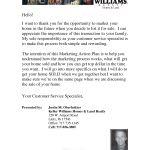
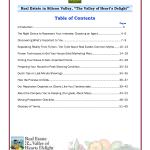

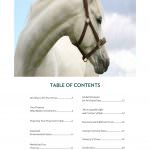






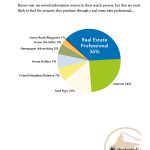
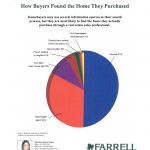

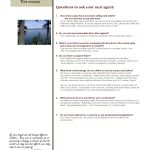
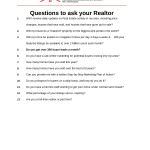
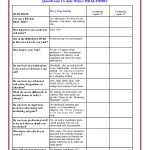

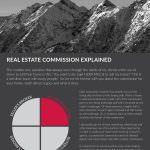

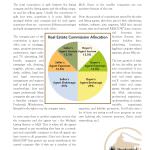
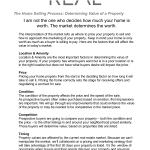


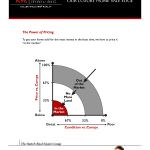



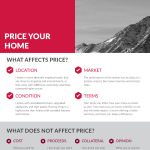
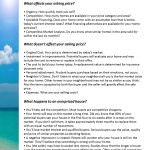
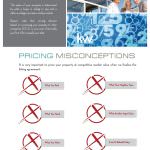

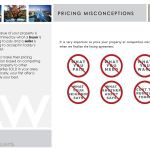


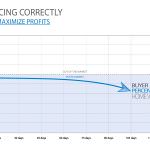
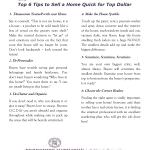

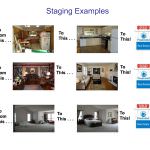
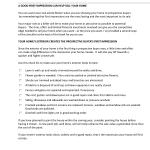

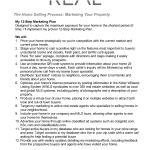
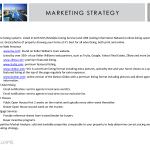
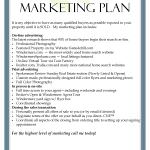
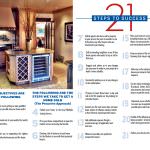
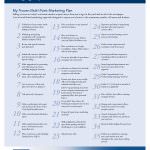
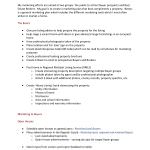
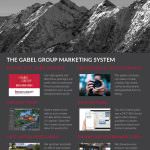


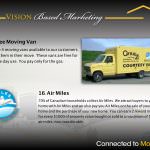
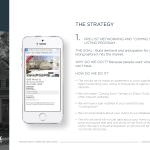
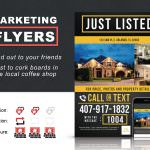

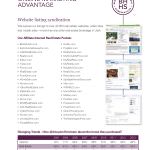
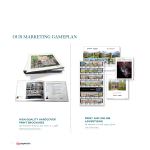


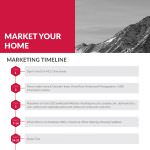




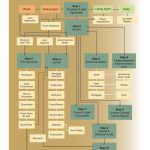
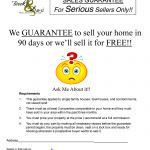

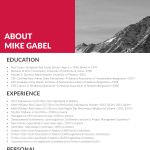

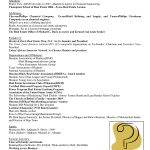


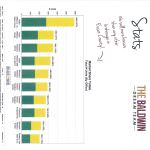

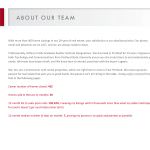

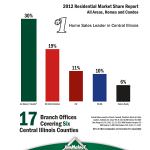
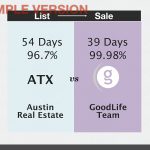

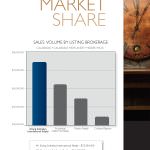

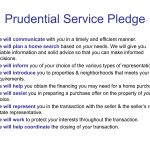
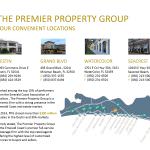


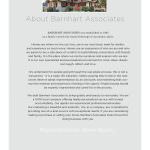

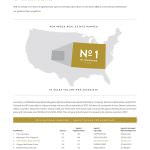

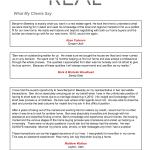
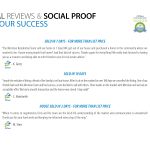
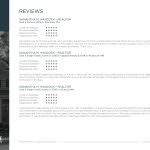
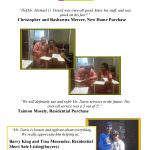
Leave a Reply